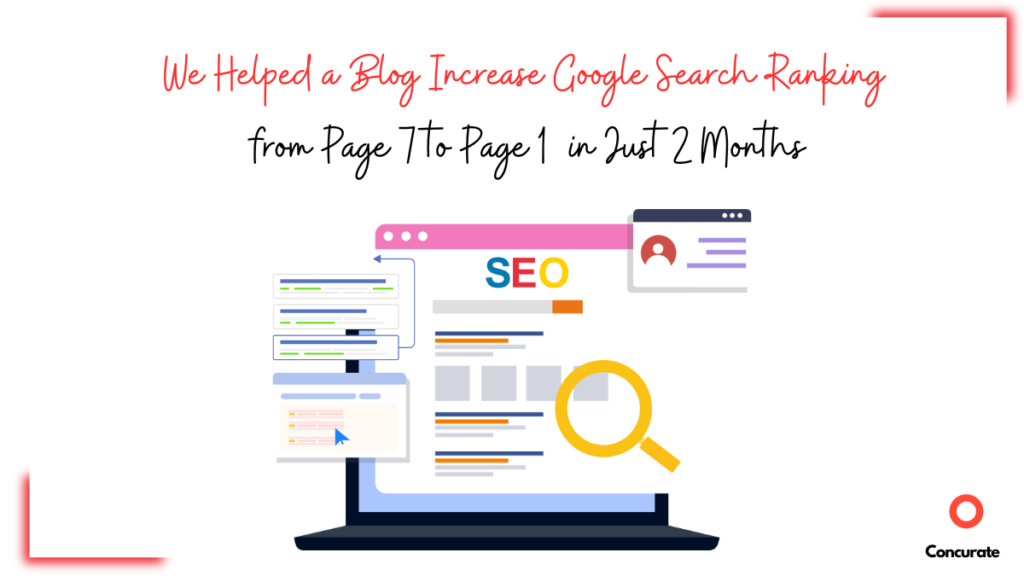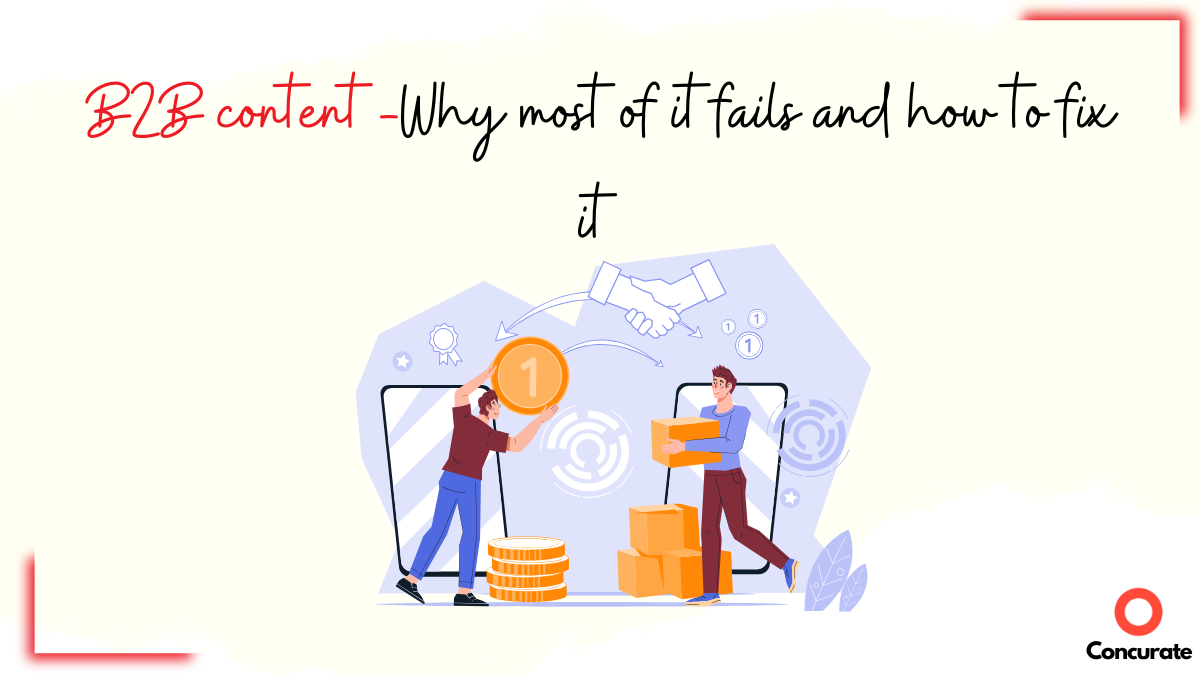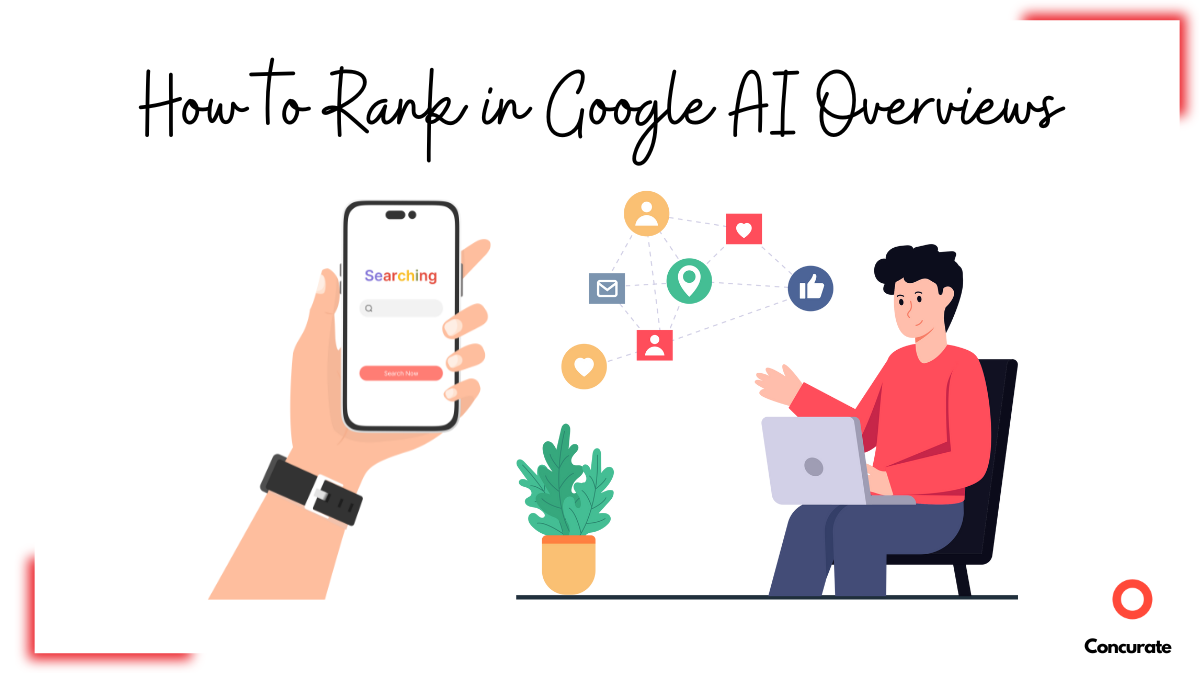How We Took a Blog from 63rd to 3rd on Google (and Got Featured in AI Overviews on ChatGPT & Perplexity)
| TLDR – How do you turn a forgotten blog into a high-ranking, high-visibility content piece your ideal audience actually finds? That’s what we’ll break down. |
The Missed SEO Opportunity Sitting Right Under Our Nose
We’ve partnered with a legal tech company since its launch, helping market its idea and patent management platform called the TIP ToolTM.
Over the past four years, we’ve created content that attracts two kinds of buyers — those aware of IP tools but not the TIP Tool™ specifically and those looking to solve innovation challenges our tool can help with. This strategy alone has brought in over 500 user sign-ups.
In January 2025, during a monthly performance review, we ran a fresh Ahrefs analysis. The results were strong: 1,300+ valuable keyword rankings, with more than half of them on Page 1. Naturally, we zoomed in to identify which blogs hadn’t yet broken into the top spots.
One blog from 2021 stood out. It was written to target the keyword ‘idea evaluation,’ but it didn’t rank for that term at all. Instead, it showed up (poorly) for four adjacent keywords, such as ‘patentability assessment.’
That insight reframed the entire opportunity: instead of chasing “idea evaluation,” we pivoted to focus on one of the “patentability assessment” related keywords.
From there, the goal was clear: help this underperforming blog climb the Google rankings and AI overviews and attract potential buyers. So, we crafted a focused action plan to make it happen.
The Checklist for Increasing Google Rankings and Attracting Potential Users
At Concurate, When a strategy works, we document it so it’s repeatable. Before diving into this blog update, we built a simple, step-by-step checklist the team could reuse across projects.
Step 1: Choose the Right Keyword to Focus On
We initiated a team discussion and agreed to shift the blog’s focus toward one of the four keywords it was already ranking for.
After analyzing all four, we decided to go with “patentability assessment.” It had strong intent, aligned well with the blog’s theme, and showed a clear opportunity for a comeback, with the highest search volume and the lowest keyword difficulty among the options.
Step 2: Spot and Remove Stale Content
Google rewards freshness, so we looked for the following in the piece:
- Were there outdated external references?
- Broken internal links?
- Content that no longer resonated with our readers?
While we didn’t really have issues with links or references for this piece, we did spot some outdated content that was no longer needed, like:
- An early access lead magnet that had long expired. It was tied to a limited-time offer, and since we’re now on the latest version of the tool, it made sense to remove it.
- A Case Report lead magnet that hadn’t performed well in the past. Keeping it only added clutter without value, so we decided to let it go.
Once we removed the stale content, we moved on to optimizing our content and structure around this new keyword, “patentability assessment.”
Step 3: Enhancing Content to Match Reader’s Intent
We dug deeper into why someone would search for “patentability assessment.” Two core questions stood out:
- Is this invention worth pursuing a patent for?
- Does it stand a good chance of getting granted?
Our original content was solid because it came from an expert – a 25-year-experienced patent attorney who had shared his thoughts on the subject in this video. It had a list of six evaluation questions (in the blog):
- What’s the market value of your idea?
- How core is it to your business and revenue
- Is it already in a product or commercialization roadmap?
- How observable is it if copied by a competitor?
- What’s the likelihood of a successful patent grant?
- How enforceable would the patent be?
Pro Tip – Google favors expert-led content. If your original piece lacks depth or subject-matter maturity, it’ll struggle to rank. If subject matters are not available, turn to reputable and unconventional resources like research papers, podcasts, books, etc.
Because our content was solid, we just made some linguistic adjustments, like replacing idea evaluation with patentability assessment.
Step 4: Add Relevant FAQs
Another important move to increase Google ranking was to add FAQs. Here is why:
- They increase your chances of landing featured snippets and AI overviews.
- They keep visitors from bouncing by giving direct answers.
- They act as a trust signal by anticipating real questions and concerns.
- They boost dwell time, which helps in boosting rankings without adding fluff.
We then researched FAQs related to the keyword, looking for low-competition, high-search-volume queries.
These gave us the perfect opportunity to add more depth to the post.
Step 5: Optimize On-Page SEO Elements
As a next step, we updated the blog title:
| Old | “Idea Evaluation: 6 Questions to Ask While Selecting Ideas for Patents” |
| New | “Patentability Assessment of Ideas: 6 Must-Ask Questions to Filter the Best Ideas for Patents”. |
We front-loaded the target keyword and ensured that it matched the search intent of our target audience – innovation managers, in this case.
Next, we optimized the post’s meta title, URL slug, and description, ensuring all elements supported our target keyword to give the right signals to Google for relevance.
As you can see, the Yoast SEO checker gave us a green signal for on-page SEO elements.
So, by now, we had done enough to boost Google ranking for the right keyword. But we did not stop there because we write content that brings business, not just website traffic.
Step 6: Bring Visitors Closer to Conversions
Once the content was aligned with the searcher’s intent, our next move was to offer real value beyond just information.
We offered the following two assets in exchange for the blog visitor’s email address:
👉 Idea Evaluation Matrix – A practical worksheet to help teams decide which ideas are patent-worthy.
👉 Free Patent Incentive Guide – For innovation leaders and R&D heads who are considering how to motivate innovation within their team (to bring more ideas to the pipeline).
👉 Tool Registration – With all the content marketing, our primary goal is to bring users and buyers for our client’s tool. So, we also added a bold visual CTA to try out the tool.
Each lead magnet was purposefully placed to:
- Match where the reader is in their decision-making journey.
- Increase the chances of conversion by offering timely, relevant help.
In short, we weren’t just writing for clicks; we were building a bridge from curiosity to conversion.
Now that we’d made all the intended changes to bring this blog to the top, we were almost ready to hit publish.
**But one thing held us back**
Step 7: Check if Your Changes Could Break Things
We knew changing the blog’s URL could break existing internal links and trigger 301 errors across all the places it had been linked.
Before moving forward, we decided to fix that first.
Instead of manually updating each and every link, here’s what we did next: We used a 301 redirect plugin on WordPress to forward traffic from the old URL to the new one.
This ensured no room for broken links, whether the piece was linked to internal or external blogs.
Then boom – we hit the publish button!
But wait, were we done by then? Not quite. To complement the on-page efforts, we also added a powerful off-page SEO element – more on that in the next step.
Step 8: Secure an Authoritative Backlink
Once the piece was published, it needed a good word (quality backlink) from an authoritative website to be put in the ears of Google. That’s where the founder’s Entrepreneur column came in.
We also ghostwrite thought leadership articles for him to publish there. For each piece, he either shares a video on the topic or we interview him over a call.
Being an attorney, he’s particular about articulation and word choices. He carefully reviews and edits every article before we submit it to Entrepreneur.
At the time, we were in the process of working on a piece about protecting IP without breaking the bank. A topic he’s passionate about.
While drafting, we noticed a section on how to identify high-value innovations for patenting. We asked if this would be a great opportunity to link our blog on patentability assessment and he agreed.
(Side note: Entrepreneur allows (only) one contextual backlink for every thought leadership piece that goes on their website.)
So, within the article, we embedded a natural, relevant link to the blog post.
Though it was just one backlink, the high Domain Rating (DR 91) and strong topical relevance of Entrepreneur gave a meaningful boost to the blog’s authority; sending strong trust signals to Google and driving referral traffic from a highly engaged audience.
| Pro Tip: Even a single, well-placed backlink from a trusted domain can outperform a dozen low-quality links. Think strategic placement, not quantity. |
At this point, the content was polished, optimized, and backed by authority. But great content doesn’t promote itself, so our final step was all about distributing content.
Step 9: Distribute to Reach Right Audience
To make sure the blog reached the people who would benefit most, we turned to LinkedIn.
We shared the post from Triangle IP’s official handle and tailored the message for our core audience. Since Triangle IP already had a strong network in this space, the goal wasn’t just to get views, but to reach the right people, like IP professionals, innovation managers, and patent counsel.
The post was written to speak directly to their challenges when deciding which ideas are worth patenting. It wasn’t promotional or generic – just clear, useful, and relevant.
Here’s how we structured it:
- A Hook: A bold question to challenge assumptions — “Think more patents = more protection?”
- The Pain-point: Highlighted common issues like bloated portfolios and wasted budgets
- The Perspective: Explained why not every idea should be patented
- Value to Users: Shared a simple framework with six key questions
- CTA: Invited readers to explore the blog and use their patent budget wisely.
We also made sure the link was placed in the comments: a best practice for LinkedIn visibility, and included relevant hashtags like #Patents, #InnovationStrategy, and #IPManagement to expand reach.
And now, after all these efforts, we were eagerly waiting to see the results roll in.
Did our efforts pay off?
Absolutely.
Let’s take a look.
Boosted Rankings, AI Overviews, Interest from Potential Customers
After implementing all the updates, we started seeing results. The blog began climbing steadily for the keyword “patentability assessment,” appearing on the first page of Google results within a month or two.
On google US search, it is currently (on the 10th of April 2025) ranking at the 3rd spot on the first page.
Another exciting moment?
We searched on AI platforms like Perplexity.ai and ChatGPT (in incognito mode) using queries like “patentability assessment” and related blog topics.
See what we got, or you can try it for yourself:
With perplexity.ai:
With ChatGPT:
Our blog also showed up in the AI overviews, see here:
Just a quarter ago, this blog was buried deep in the search results. Now, it’s ranking in the top 3 and in AI search results (that’s a bonus).
Recommended Read: Programmatic SEO Case Study: How We Helped a Network Training Provider Dominate 60+ Markets?
The other objective of attracting potential customers was also met. This single blog brought in four strong leads in just one month, and not just from casual browsers. These were professionals from reputed institutions, including top technical universities and organizations deeply involved in open innovation and R&D, who downloaded the idea evaluation matrix.
The kind of audience that’s actively working on patents, research, and tech-driven solutions. Exactly the segment Triangle IP aims to engage.
That kind of traction not only validates the content but also proves the lead magnet worked just as intended: offering value in exchange for genuine interest.
Here’s what Thomas Franklin founder of Triangle IP had to say about the impact of our work:
It’s been almost two months since we made all the changes, and we are positive we will see more good results from them. (Smiling while writing this) It feels amazing to see the strategy working!
And knowing SEO takes time, we’re hopeful for even more traffic and leads in the coming months.
Why Content Performance Tracking and Update Matters?
At Concurate, we don’t just create content, but we refine, rework, and reposition it to drive real business results.
This blog republishing is a perfect example. With the right keyword, sharper messaging, and purposeful lead magnets, we turned a quiet performer into a high-ranking, lead-generating asset.
But that’s just a glimpse of what we do.
We partner with B2B SaaS founders and CEOs to build content engines that:
- Boost discoverability through strategic SEO
- Attracts potential buyers
- Write well-researched, engaging, and actionable content to hook website visitors
- Showcase customer wins through case studies that sell
- Elevate thought leadership with ghostwritten articles and founder-focused LinkedIn content
If you’re sitting on a goldmine of content that just needs the right polish to shine, we’re here for it.
To learn more about our strategy and work, let’s chat. Book your slot for a free consultation.
We promise: no pressure, just an open conversation about all the possibilities to elevate your brand and grow your business with content marketing.
FAQs
1. How to Get on Top of Google Search Results?
To get on top of Google search results, you need to focus on:
- Targeting the right keywords
- Creating high-quality, relevant content
- Earning backlinks from other trusted websites
- Making your website fast and mobile-friendly
- Keeping content updated and audience-focused
It takes time, but the results are worth it!
2. How can I Optimize My Blog Posts for Better Search Engine Ranking
You can optimize your blog posts by:
- Including your target keyword in the title, meta description, URL, and naturally in the content
- Using headers (H2, H3) to organize content
- Adding internal links to other relevant blogs
- Using images with alt text
- Making sure the content matches what the reader is looking for (search intent)
Note: Don’t forget to update old posts, too; they can regain rankings with small tweaks.
3. Can you Pay Google to be on Top in the Search Results?
Yes and no.
You can pay Google for ads (called Google Ads) to appear at the top of search results, but that’s marked as “Sponsored.” To appear organically (unpaid) at the top, you need strong SEO. Paid and organic listings are separate. Paying won’t boost your organic rank.
4. How can I Check Page Position in Google Manually?
Here’s how:
- Open a browser in incognito/private mode (to avoid personalized results).
- Go to Google and search your target keyword.
- Scroll through the results to find your page.
Note: Your ranking may vary by location and device. For consistent tracking, use tools like Google Search Console or tools like Ahrefs or SEMrush.






